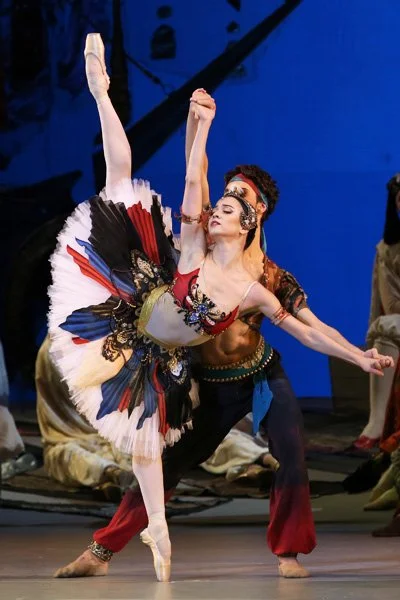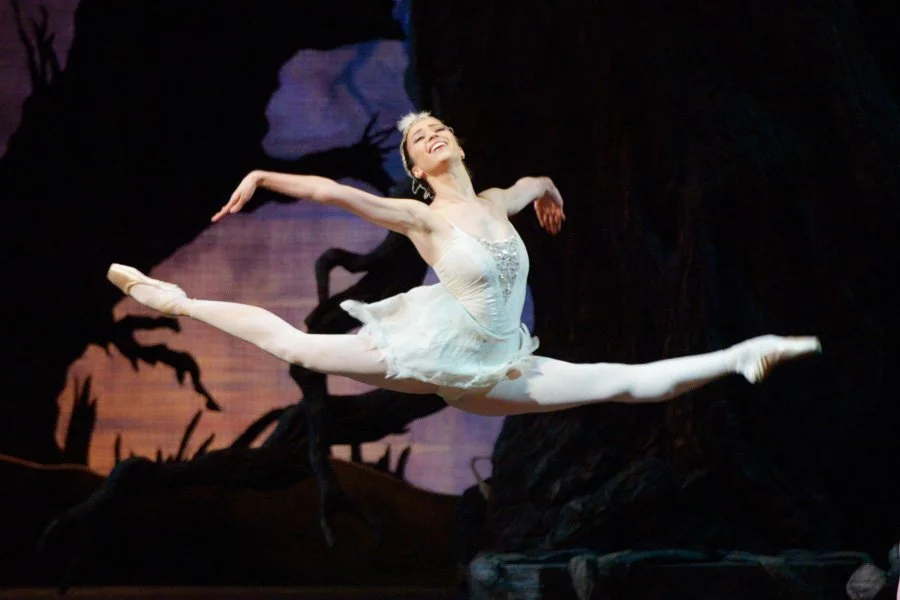Is Ballet a Sport or an Art? A Reflection on Technique, Storytelling, and Renata Shakirova
by Yuhua Emma Zhang
4 July 2025
Today, many young ballet dancers, including myself, find themselves caught in the tension between ballet as a sport and ballet as an art. The physical demands of ballet are clear: multiple pirouettes on pointe, gravity-defying leaps, and intense hours of daily training that push the body to its limits. This makes it easy for dancers and audiences to consider ballet a sport. But is that all it is?
To answer this, we need to ask: What is the primary purpose of ballet?
Art is often seen as a way to express ideas, emotions, and meaning through visual or experiential forms. In contrast, a sport involves physical effort and skill, usually framed around competition and scoring. While both definitions describe ballet—a highly physical, skill-demanding discipline—ballet’s essence cannot be fully contained in either category. Still, from my own amateur perspective, I believe ballet is fundamentally an art.
Why? Because ballet is not just about achieving physical feats. In sports, the goals are measurable: the most goals, the highest jumps, the fastest times. In ballet, although competitions do judge dancers on their technique, this rarely represents the main goal for most professional dancers. Their mission, especially onstage, is to tell a story. They aim to evoke emotions, embody characters, and reveal beauty through line, movement, and expression.
A perfect example of this is the Prix de Lausanne, one of the most prestigious ballet competitions in the world. There, it’s not always the dancers with the most turns or the highest jumps who win the top prize. Some winners have performed variations with just a single pirouette but showcased such extraordinary artistry, musicality, and presence that they surpassed others with flashier techniques. The jury seeks potential, emotional depth, and the ability to communicate something beyond the steps, not just the most tricks.
Of course, this is just my opinion, and I’m not claiming to hold any objective truth. But I believe that when ballet reduces itself to tricks—five pirouettes, extreme extensions, and endless jumps—it begins to lose its soul.
The Rise of Sport-like Ballet
A growing trend in the ballet world, especially among pre-professional dancers and even some major companies, emphasizes pushing technical boundaries: more turns, more hyperextension, and more spectacle. While this level of athleticism is impressive, I often feel it comes at the expense of artistry. Port de bras are neglected. Facials remain blank. Emotion takes a backseat to the mechanics of movement.
I first recognized this shift while watching a performance of The Nutcracker by one of America’s top ballet companies. I had looked forward to this production for weeks since The Nutcracker is one of the most iconic and beloved ballets. But when the Sugar Plum Fairy came onstage, something felt missing. Yes, she was technically incredible—executing a quadruple dégagé, performing impressive grand battements, and maintaining rock-solid balance. But the performance had lost its sparkle. No warmth. No magic. It left me with a surprising feeling: sadness. The role, once shining with joy and fairy-tale wonder, felt more like an exhibition of tricks than a dance of enchantment.
And with the rise of contemporary choreography, often plotless, emotionless, and abstract, it has become even more challenging to find the kind of ballet that made many of us fall in love with it in the first place.
Renata Shakirova: A Dancer Who Remembers
In the midst of this shift, dancers like Renata Shakirova keep ballet’s artistic heart alive.
Renata is a rare dancer whose performances truly resonate, not just on stage but within the hearts of her audience. She doesn’t just execute choreography; she embodies it. In every step, you sense her joy, her intention, her soul. Whether she’s dancing Kitri in Don Quixote or Medora in Le Corsaire, there’s a spark in her movements that makes it feel like the role was written just for her. She doesn’t perform for applause; she performs to communicate.
Her chaînés are perfect, but not just technically. They carry a fearless and buoyant momentum that’s hard to describe. They feel like laughter, like sunshine in motion. It’s not about being fast or clean (though she is both); it’s about the energy and brightness she infuses into them. That is true artistry.
Renata Shakirova in Le Corsaire, Courtesy of Mariinsky Russia
Her port de bras are equally breathtaking: expansive, expressive, and fluid. She moves her arms with intention, never as an afterthought. They don’t just complete the steps; they extend the emotion. You can read her character through how her hands shape the air. There’s a softness and fullness in her movement that shows how deeply she relates to the music, how fully she inhabits every count.
What makes Renata extraordinary is not just her technique, even though it is elite. It feels so natural to her that she can let go of thinking about every placement. This freedom allows her to take risks that other dancers might avoid. She throws her limbs with power, joy, and no hesitation, landing with finesse. Watching her is exhilarating.
Then there is her face: her smile, her eyes, her expressions. Renata is never blank. She feels, and it shows. She connects not only with her partner and the story but with the audience. When she smiles, it is genuine, full of emotion and character. Whether she is playful as Kitri or noble in a pas de deux, you never have to guess what she is feeling. She lets you in.
Renata Shakirova in Shurale, Courtesy of Mariinsky Russia
In a ballet world that can feel like it veers toward cold athleticism, Renata reminds us of what ballet truly is: alive, passionate, vulnerable, and personal. She dances not to impress but to express, and that is why she does impress.
She is not just a skilled technician. She is an artist, a storyteller, and a force of nature. When she dances, you don’t just watch—you feel. For dancers like me, she is a living reminder of what we should strive for: not just more turns or higher legs but more soul.
Dancers Are Artists, Not Athletes
Of course, ballet dancers train like athletes. Many studies show that the physical demands of ballet often exceed those of sports like soccer or hockey. But what separates a dancer from an athlete is intention.
Athletes train for victory. Dancers train for interpretation.
No two ballerinas will perform Giselle or La Bayadère the same way. The choreography may be identical, but each dancer brings her own soul to the role. That creative interpretation, that personal inflection of character and emotion, is what makes a ballerina an artist.
So while competitions, Instagram clips, and extreme flexibility might make ballet seem like a sport, we should remember that ballet, at its core, was created to be felt, not measured.
Why This Matters
It’s easy to feel discouraged when we see ballet’s artistry fading behind spectacle. But recognizing this issue isn’t about criticizing dancers. I know I could never match the technique of the amazing professionals on stage. However, as someone who loves ballet, I can notice when something is being lost.
We need dancers like Renata Shakirova now more than ever—dancers who remind us that ballet is not just an athletic feat but a poetic one. She keeps the flame alive, showing us that storytelling, beauty, and joy are still possible in this art form.
Let’s celebrate the athleticism, but let’s not forget the true purpose of ballet.

